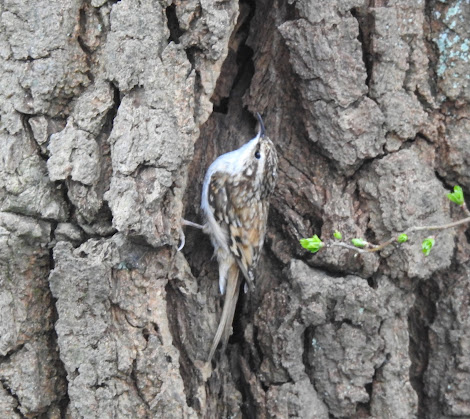I can't help thinking that the day I should have gone birding was Tuesday. A flock of 80 or so thrushes (probably Redwings) flew west as I strolled to the paper shop. Perhaps a sign. Unfortunately that was the one day I couldn't get out.
Instead I had taken Lyn to Morgrove Coppice on Monday afternoon to take advantage of the wheelchair accessible path. We didn't see much, but it was sunny and still warm enough for a few Peacocks and Brimstones to be on the wing.
This morning, in cold grey conditions I opted for Earlswood Lakes. I had hoped for a hirundine or two, but there were none. Instead, summer was represented by a few Chiffchaffs, and a singing Blackcap.
One thing noticeable about Earlswood though, is how tame the common birds are. They are regularly fed and have obviously got used to the constant procession of walkers, dog-walkers, and birders. So I had fantastic views of a Goldcrest with a beakful of feathers for its nest, a pair of Treecreepers prospecting for a nest site, Nuthatches, Tits, Wrens, and Robins all just feet away.
 |
| Treecreeper |
 |
| Nuthatch |
The drake Wigeon which has been here for some time, was just as unconcerned and close. I heard a Redpoll, and a Meadow Pipit going over, and saw a pair of Grey Wagtails around the causeway between Engine and Windmill Pool. A Reed Bunting was singing in spite of the chill.
 |
| Wigeon |
About 40 Black-headed Gulls chased the few available insects above Engine Pool, the rafts supported two or three Common Snipe, and I counted three Shovelers, 34 Tufted Ducks, three Herring Gulls, three Cormorants, and 13 Great Crested Grebes.
 |
| Sparrowhawk at Morgrove Coppice (Monday) |
It was all very different from the fleeting and distant glimpses of birds at Morgrove Coppice.
One day I'll be able to complete a post about a scarce bird or a spectacular bird movement, but today was not the one.





































